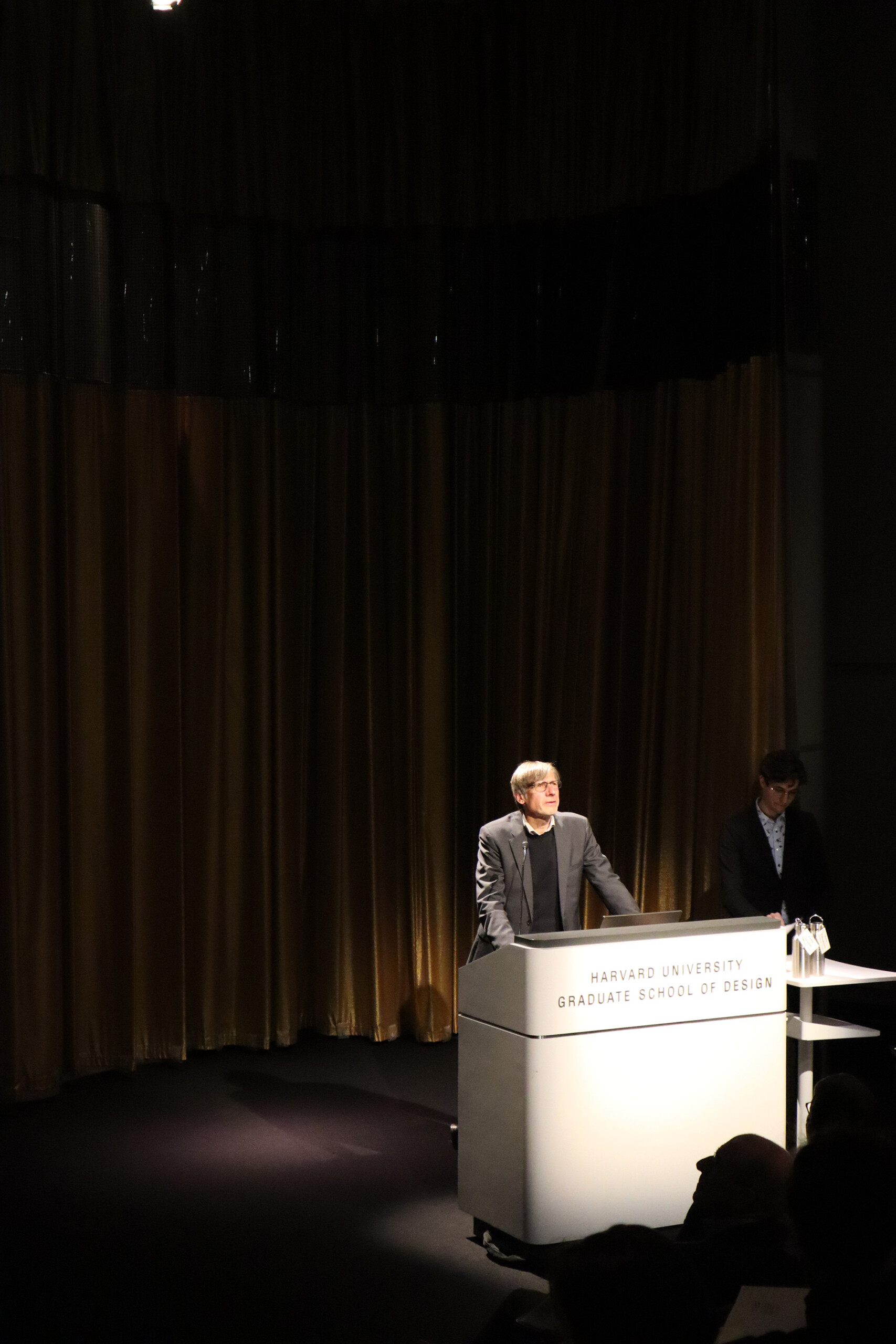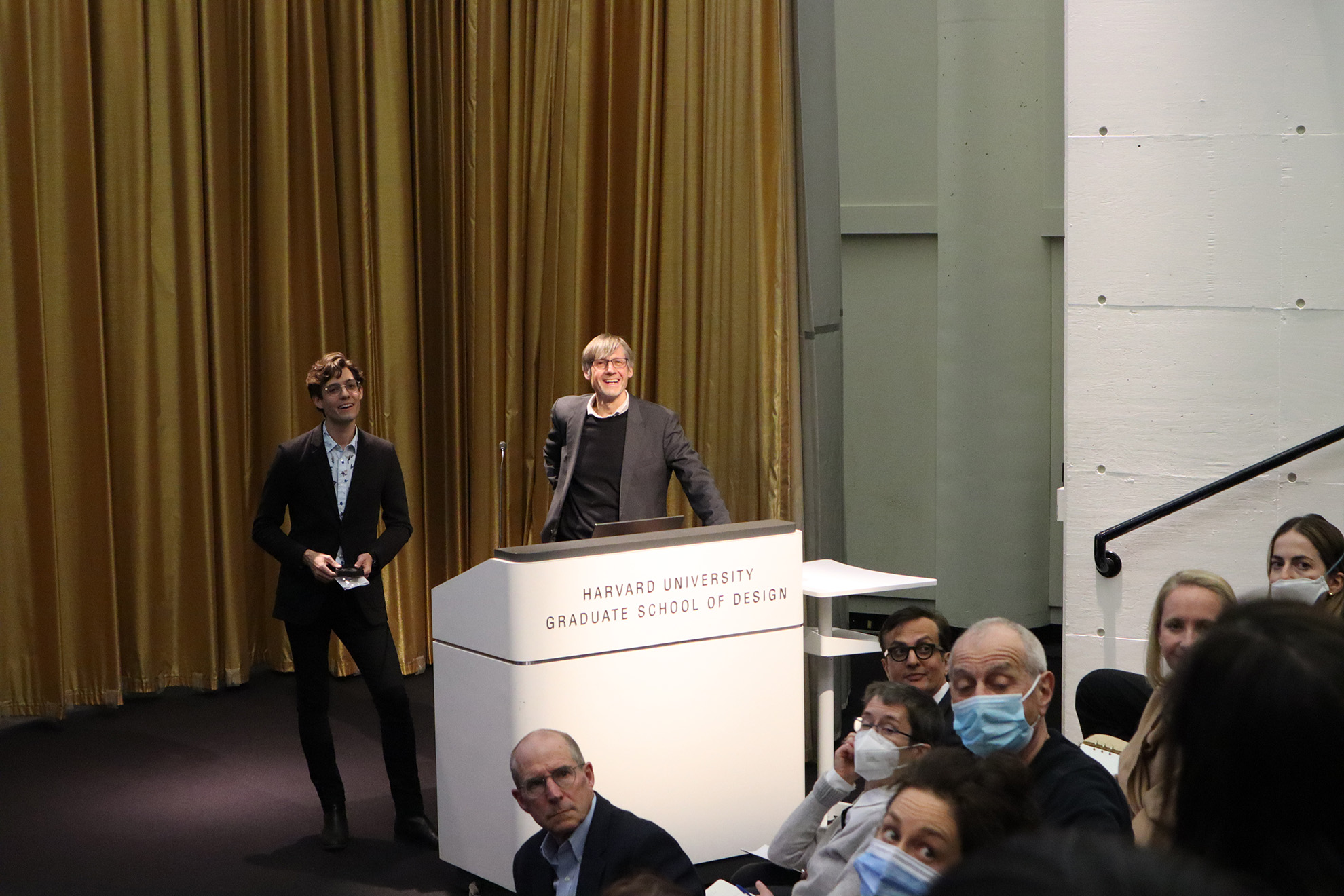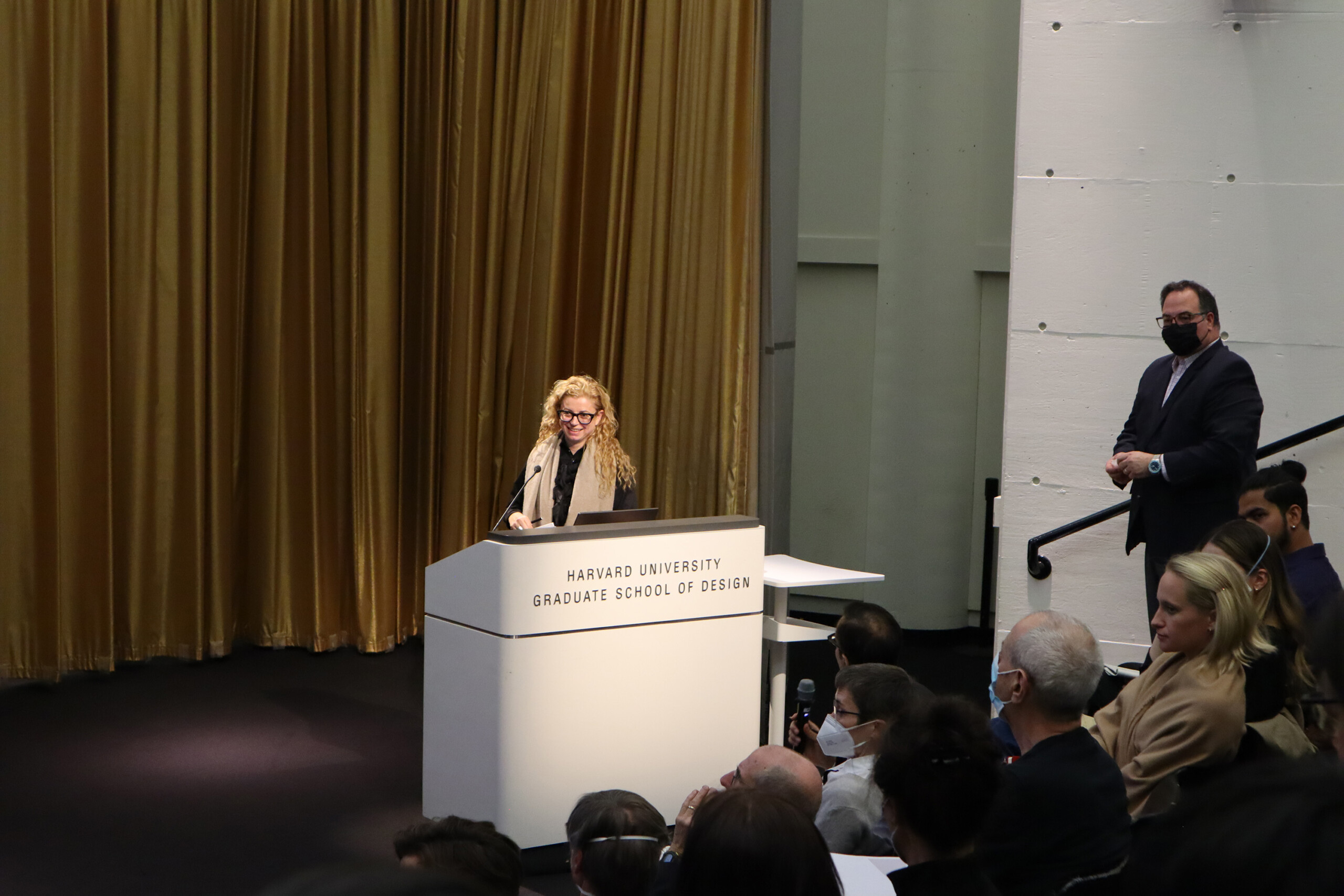Commemorating Earth Day, the Harvard Center for Green Buildings and Cities (CGBC) hosted its first in-person event since the beginning of the pandemic, featuring six short presentations by GSD faculty whose research relates to designing sustainable solutions for a better built environment. The topics of the presentations ranged from algae-based biomaterials to urban infrastructure, and were followed by five-minute Q&A sessions. All work was supported by CGBC faculty grant awards.
The timeliness of addressing these environmental challenges was highlighted by James Stock, Harvard’s new vice-provost for climate and sustainability, who stressed the importance of interdisciplinary communication in his keynote address, pointing out the scale of the problem in monetary terms: “Our energy system, from what we are doing, is imposing $600 billion in damages, every year, on future generations.” He also warned of the dangers of merely “spending money to feel good without actually solving the problem.”
The six speakers all presented their research aimed at improving the built environment with one clear vision in mind: “to transform the building industry by developing new processes, systems, and products that lead to more sustainable and high-performance buildings and cities,” according to the opening address from Ali Malkawi, founding director of CGBC, director of the Doctor of Design Studies Program, and professor of architectural technology.
Algae-Based Biomaterials for the Built Environment
Martin Bechthold, Kumagai Professor of Architectural Technology, presented a unique solution to the challenge of reducing the embodied carbon footprint of the construction industry. By developing new algae-based materials that absorb CO2 during photosynthesis, Bechthold proposes that the built environment could be transformed into a carbon storage device on a large scale, sequestering carbon in the material itself and holding it for the lifetime of the building.
Working in collaboration with a team of material scientists at Caltech led by Professor Chiara Daraio, the GSD’s researchers have been focused on the practical challenges and implications of the algae-based material being developed at Caltech: How can we fabricate functional building components from it, while navigating its active properties? What opportunities and efficiencies might it offer us? Bechthold noted that a growing network of colleagues and partners has been fundamental to their research, thanks to the CGBC.
Reshaping Urban Environments through Infrastructure Design Protocols (Phase I + II)
Rosalea Monacella, design critic in landscape architecture, offered timely insight into the increasing demands faced by the electrical power grid—and how design can provide solutions while simultaneously addressing the global implications of climate change. As urban communities grow and put pressure on existing infrastructures, a radical reevaluation is required in order to develop adaptable, modulating structures for the future. This means understanding and anticipating not only environmental concerns but also the technological, economic, logistic, and social challenges for the cities of tomorrow.
Tellingly, she noted how sorely out of date America’s national grid infrastructure is: “The majority of the transition and distribution lines were constructed in the 1950s and ’60s, with a life expectancy of 50 years.”
The team’s design research was intended to develop deployable prototypes that work on a regional scale, giving individual cities control, responsibility, and accountability for their own power and water consumption, drawing resources from their local environs.
Energies of the Night: Nocturnal Public Space and Energy Policy in the Arabian Peninsula
Considering the geo-social implications of design in the Arabian Peninsula, Associate Professor of Landscape Architecture Gareth Doherty gave a presentation centered around the use of public spaces after-hours. Given that communities in this region tend to socialize when darkness falls and the temperature drops, there is a need to come up with less light-polluting solutions.
Drawing on field research conducted through his “Design Anthropology” seminar, Doherty explored the possibilities of more efficient design for darkness, plus strategies to make better use of cooler temperatures and remediating lighting needs. “Navigating the dark spaces of the night calls for the activation of our senses, beyond the primacy of the visual,” he says.
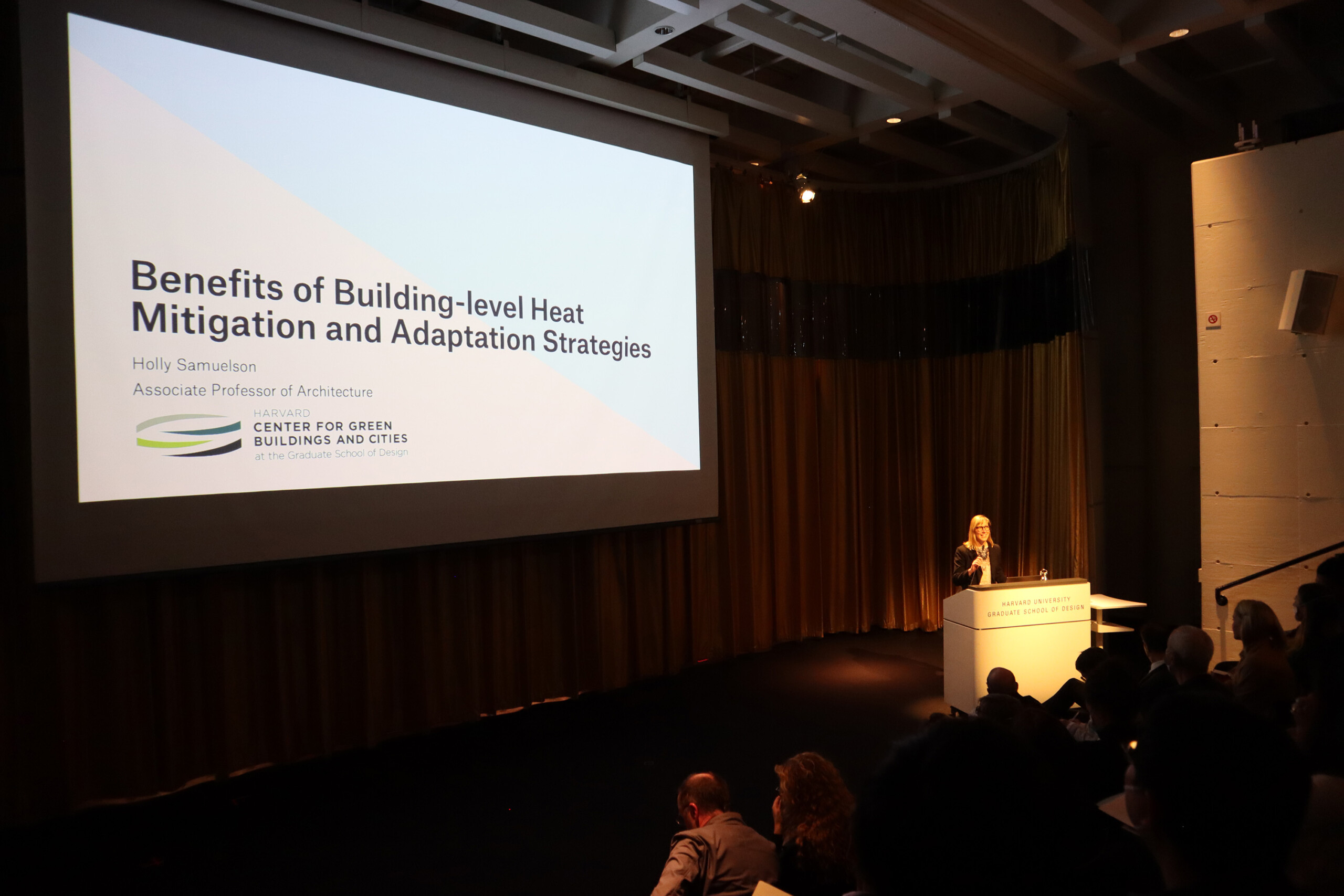
Benefits of Building-Level Heat Mitigation and Adaptation Strategies
It is a self-perpetuating problem that the issue of urban heat is exacerbated by building design. Consequently, as Associate Professor of Architecture Holly Samuelson explained, the onus is on architects, urban planners, and designers to come up with strategies for heat mitigation—noting that, “In 50 years, there could be billions of people that are susceptible to temperatures and climates that are outside of the conditions that have served humanity well for the past 6,000 years.”
As Samuelson pointed out, this can also have implications for the health of the urban community thanks to factors such as heat exposure and greenhouse gas emissions. In addressing such a multifaceted problem, a joined-up approach is required—one that considers the impact of building design strategies at different scales, while demonstrating a reproducible and scalable framework that can inform future work.
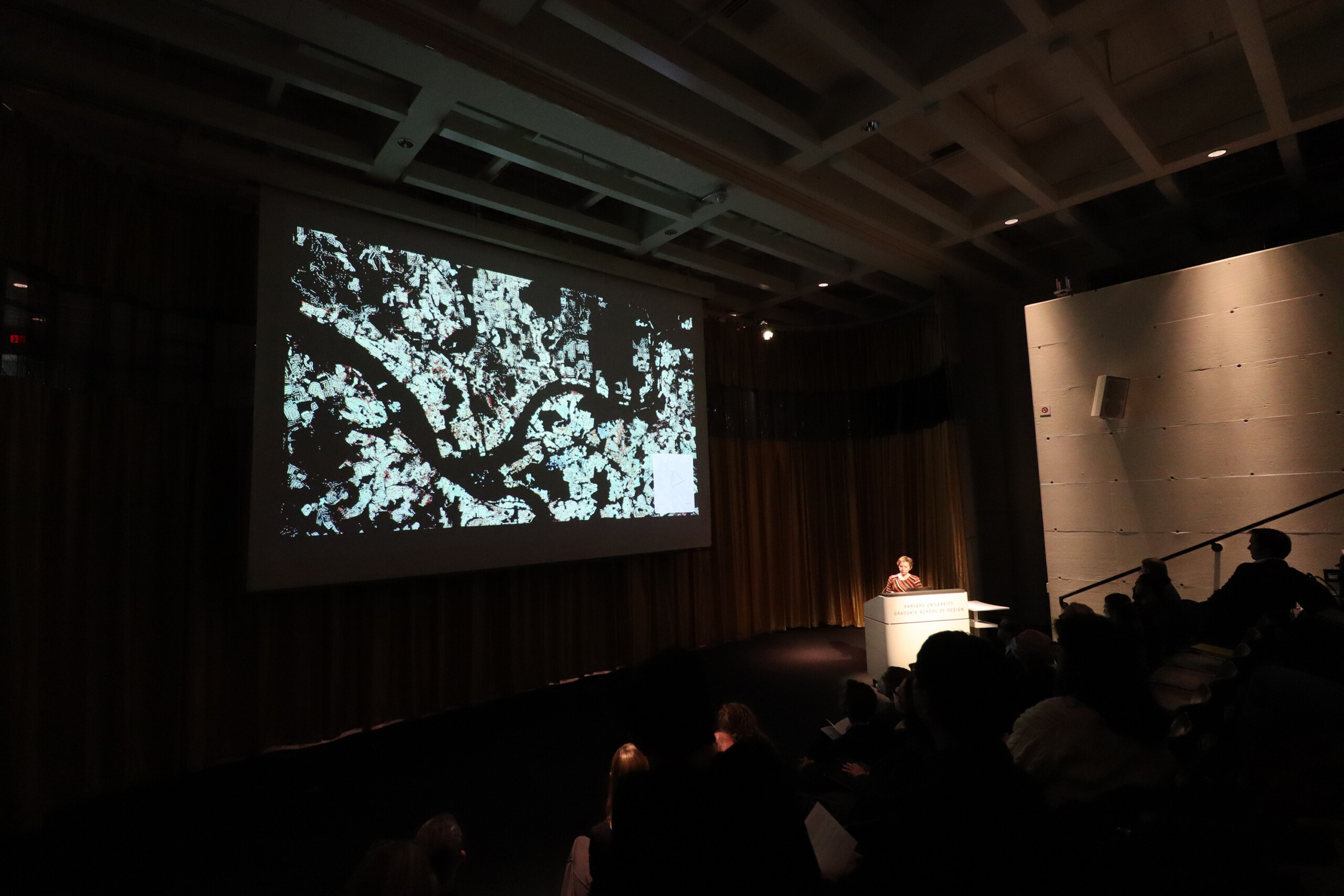
Evaluating Location-Based Sustainability at the Site Level
Carole Turley Voulgaris, assistant professor of urban planning, highlighted the need for greater consistency in the methodology for measuring vehicle miles traveled (VMT) at site level for existing and proposed developments. She explained that it’s “one way to measure the sustainability of a particular location.” Research was undertaken into existing office sites in both the San Francisco Bay Area and the Wasatch Front Region of Utah.
With VMT estimations varying considerably, it was noted that discrepancies are often magnified as the figure is multiplied to cover wider areas. The team suggested that further research is required to prioritize the “four Cs”: consistency, cost-effectiveness, closeness, and conservatism.

The Oasis Effect: Agricultural Practices in Arid Environments
With a backdrop of climate change and aggravated environmental degradation, the challenges of agricultural practices in extreme arid environments are only going to become more severe. With this in mind, Pablo Pérez-Ramos, assistant professor of landscape architecture, explained how his team’s research had produced a typological matrix of oases, allowing for a methodological and comparative study of them. It’s a resource that will become increasingly relevant as the effects of global warming and the resultant shifts in landscapes intensifies.
Pérez-Ramos announced that his team will soon be able to conduct field research that includes the use of drone technology to measure the thermal shock induced by the presence of vegetation and water.
Ali Malkawi concluded the meeting by saying, “It’s been wonderful to see this impactful research grow as a result of the CGBC seed funding—and continue to gain traction.” He also announced the issuing of at least five new awards for the coming year.
